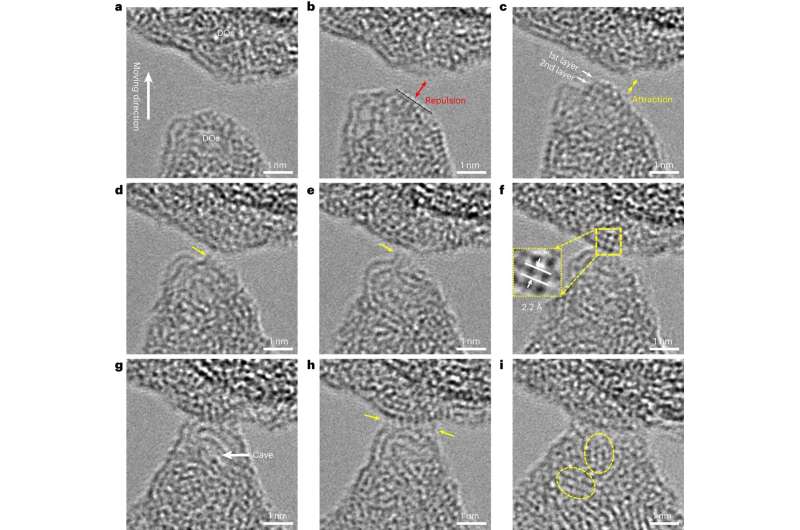September 29, 2023 report
This article has been reviewed according to Science X's editorial process and policies. Editors have highlighted the following attributes while ensuring the content's credibility:
fact-checked
peer-reviewed publication
trusted source
proofread
Self-healing of synthetic diamonds observed at room temperature

A team of chemists, materials scientists and aeronautical engineers at Beihang University, working with one colleague from Yanshan University and another from the University of Chicago, reports evidence of self-healing in a sample of synthetic diamond at room temperature.
In their study, reported in the journal Nature Materials, the group created samples of microwire diamonds, caused them to crack and then used an electron microscope to watch them heal. The editors at Nature have also published a Research briefing in the same journal issue outlining the work by the team in China.
Ever since scientists discovered that diamonds could be made not only in the lab but also in industrial settings, work has been ongoing to find ways to make them less prone to cracking, which limits their use in a wide variety of applications. Prior research has shown that if diamonds are made using a hierarchical internal structure, they become less prone to cracking—but not enough to allow their use in desired applications.
More recently, scientists have discovered that nanotwinned diamond composites (ntDC) have some degree of self-healing. But these observations were made with tests conducted at high pressure and temperatures. In this new effort, the research team wondered if similar types of self-healing might be possible at normal pressure and room temperature.
To find out, the researchers created several ntDC nanotwinned samples using onion carbon compressed at very high temperatures. They then set up DSC and ntDC nanobeams using an ion beam technique. After mounting ntDC samples, the nanobeams were used to create cracks in the samples, the results of which were viewed using a scanning electron microscope. To ensure their results were reliable, the team conducted multiple fracture tests.
The research team observed self-healing in the ntDC samples. Testing showed the healed samples had a tensile strength of 34%. In studying the healed samples, the researchers found the presence of sp2 and sp3-hybridized carbon atoms on opposite sides of cracks, which they describe as osteoblasts; these allowed for healing as they bonded with one another. The team also conducted simulations of what they observed and found that such interactions triggered C-C re-bonding across gaps, allowing healing.
More information: Keliang Qiu et al, Self-healing of fractured diamond, Nature Materials (2023). DOI: 10.1038/s41563-023-01656-4
Fractured diamond can heal itself at room temperature, Nature Materials (2023). DOI: 10.1038/s41563-023-01665-3
Journal information: Nature Materials , Nature
© 2023 Science X Network





















